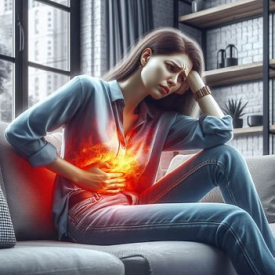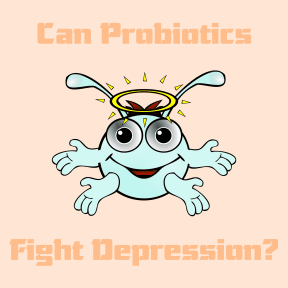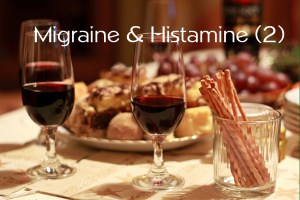Yesterday we started talking about histamines, DAO, and migraine. If you missed that post, you’ll need to go back in order to get background before you go on with this post.
The theory is that low diamine oxidase (DAO) levels in migraineurs may be a cause or at least a trigger of migraine attacks in some (or maybe most) migraineurs.
We talked about a study yesterday that suggested that low DAO was common in migraineurs. Now there are reasons to be positive about this study, but also reasons to be suspicious. First let’s look at some reasons in each category. But I’ll tell you from the start that I think there is some merit in the theory.
More reasons why this theory might work
First, a list of foods rich in histamine may look very familiar. It includes, for example, fermented and aged foods, such as red wine and aged cheese. Chocolate and nuts may also be on the list. Sound familiar? That’s right, these are all common migraine triggers, and foods often avoided in a low tyramine diet, which is probably the most well-known migraine diet. Could it be that, while avoiding tyramine, we’ve really been cutting down on histamine?
And what about symptoms? Yes, headache can be a symptoms of histamine intolerance. So can congestion (very common in migraine), and gastrointestinal symptoms (also common in migraine or comorbid with migraine (IBS for example)).
We do know that headache can actually be triggered by administering histamine (example).
Reasons to be suspicious
First, this was a fairly small study, especially when it comes to filtering other factors, such as medications that people were taking.
There could be other reasons why migraineurs had lower DAO levels. There are also a number of reasons for migraine symptoms.
In other words, other studies have shown common issues in migraine patients, such as genetic factors, low magnesium levels, neurological factors, etc. You simply cannot throw out all that information and say that this is now the only cause of migraine. Either it fits into the web of triggers and causes, or it is a trigger in some and not others, or it is actually a result of other migraine issues, not a main cause.
We cannot take one small study and claim we can now cure migraine.
But let’s take the DAO connection seriously…
That being said, there are good reasons to take this study seriously.
This is not just a vague theory from beginning to end. We already know that histamine levels can cause sometimes severe symptoms, and we have a pretty good idea how it works. We already know that many of these foods do trigger migraine attacks. We already know there are links between migraine and histamine. There’s a lot of science behind this idea. The main question is, just how much do low DAO levels impact migraine symptoms, and how many migraineurs may be in this category? It will take time before we know the answer.
Should I take action?
As with most neurological diseases such as migraine, it’s a challenge to generalize. Symptoms of both migraine and histamine intolerance can vary drastically from person to person. Tests may not be reliable. And treatment will work to varying degrees.
If you have symptoms that might suggest histamine intolerance, you should certainly look into lowering your histamine levels. We’ll talk about that more in a moment.
Here are some common symptoms... Skin problems, such as itchiness and hives. Swelling of tissues (including tightening in the throat). Headache. Congestion/runny nose. Fatigue. Indigestion and heartburn. Red or watery eyes. Irregular heart beat. You’ll especially notice these symptoms after eating histamine rich foods such as alcohol, foods with yeast, and cheese. Other symptoms common to migraine, such as nausea, may also occur.
The best way to see if you’re histamine intolerant – and this may not be what you want to hear – will be to change your diet for several months.
Tests may not be reliable (example). And remember, this is different from an allergy, which you may be tested for.
It is wise to talk to your doctor, particularly if you see clear symptoms after eating histamine rich foods (you are keeping a headache diary, right? You are including other symptoms and possible triggers, right?). You may actually have an allergy, or your doctor may have other recommendations.
Your doctor may not, however, know a lot about histamine intolerance.
Now here’s the tricky part. Even if you can’t see an obvious connection, it is possible that histamine is triggering at least some of your migraine attacks. And the diet may be the only way to find out for sure.
Finally, here are some common treatments for histamine intolerance:
- A low-histamine diet: This one isn’t optional. If you do the things below, the assumption is that you’re already on a low-histamine diet. This will start out very strict, and last for several months in order to see if it’s a help. Don’t take a shortcut here. You’ll also have to watch out for some medications which could raise histamine levels. (An example of a low histamine diet)
- Vitamins: Your doctor or specialist may recommend vitamins that will help support the diet. Vitamin C and vitamin B6 are commonly prescribed.
- DAO supplements: DAO supplements can also support your diet. Some of these include HistDAO, DAOSin, and Histame.
- Other supplements: Other supplements may help, such as a good probiotic. Some people find that their histamine levels get out of balance due to imbalanced flora in the intestinal tract.
- Antihistamines: It might be surprising the antihistamines are low on the list. They’re not always a good preventative or treatment generally, but they can sometimes help in case of emergency (ie if you accidentally ate something high in histamine).
Thanks for sticking with us through all this information! Let us know if you have experience with histamine intolerance, or if anything else is consistent with your symptoms or treatment.
Want to learn even more? Start here: Histamine and histamine intolerance



 The patients in the study received 4 weeks of probiotic treatment, using a supplement available in the Netherlands. The probiotic was “multispecies”, meaning that there were several strains given in the supplement.
The patients in the study received 4 weeks of probiotic treatment, using a supplement available in the Netherlands. The probiotic was “multispecies”, meaning that there were several strains given in the supplement. In a perfect world, your doctor would know your medical history and your conditions, test the flora in your gut, and design for you the exact probiotic you need.
In a perfect world, your doctor would know your medical history and your conditions, test the flora in your gut, and design for you the exact probiotic you need.